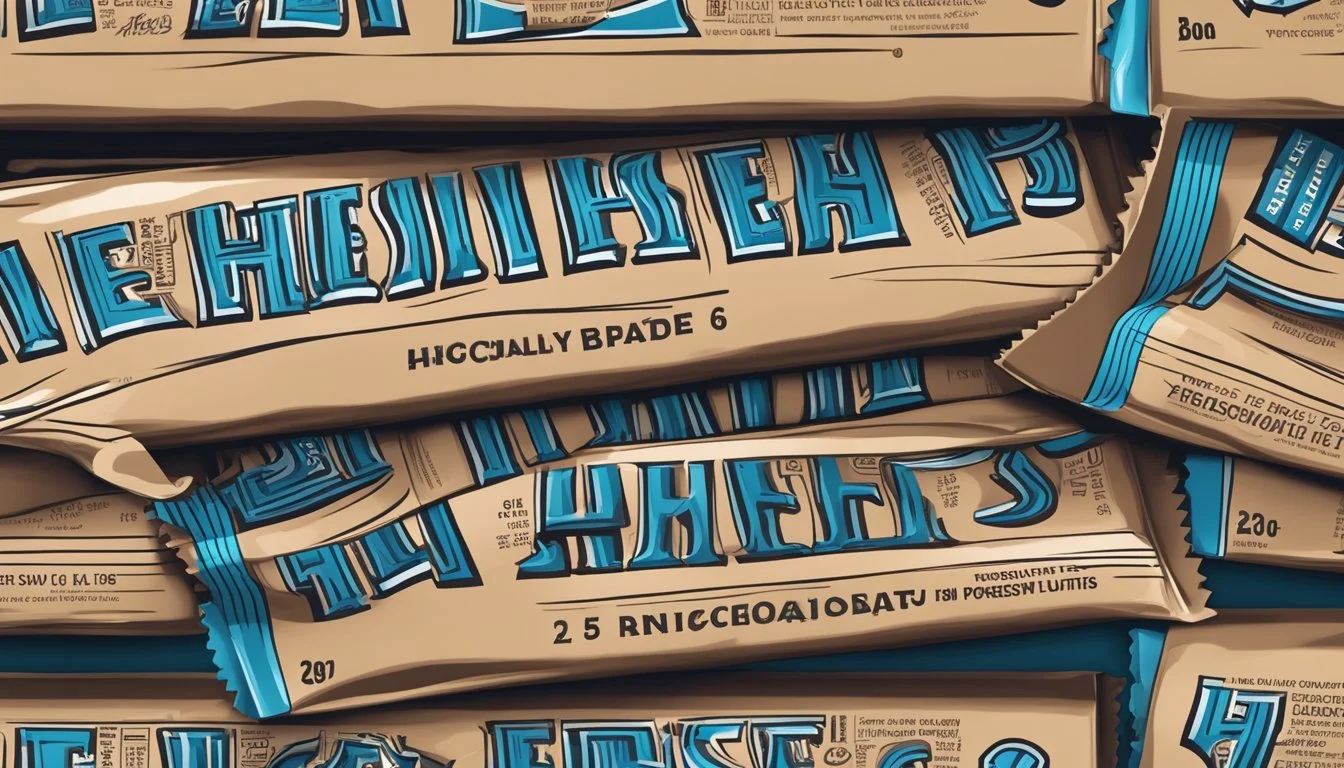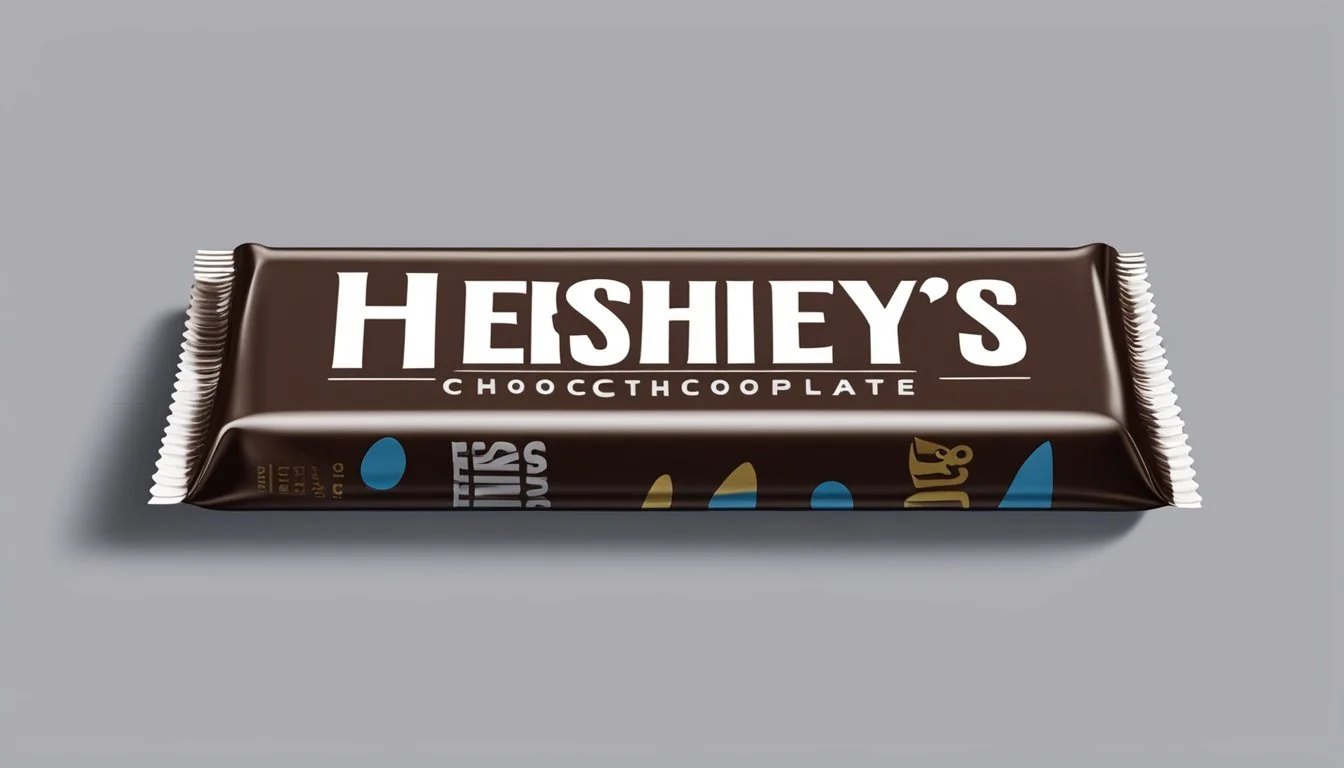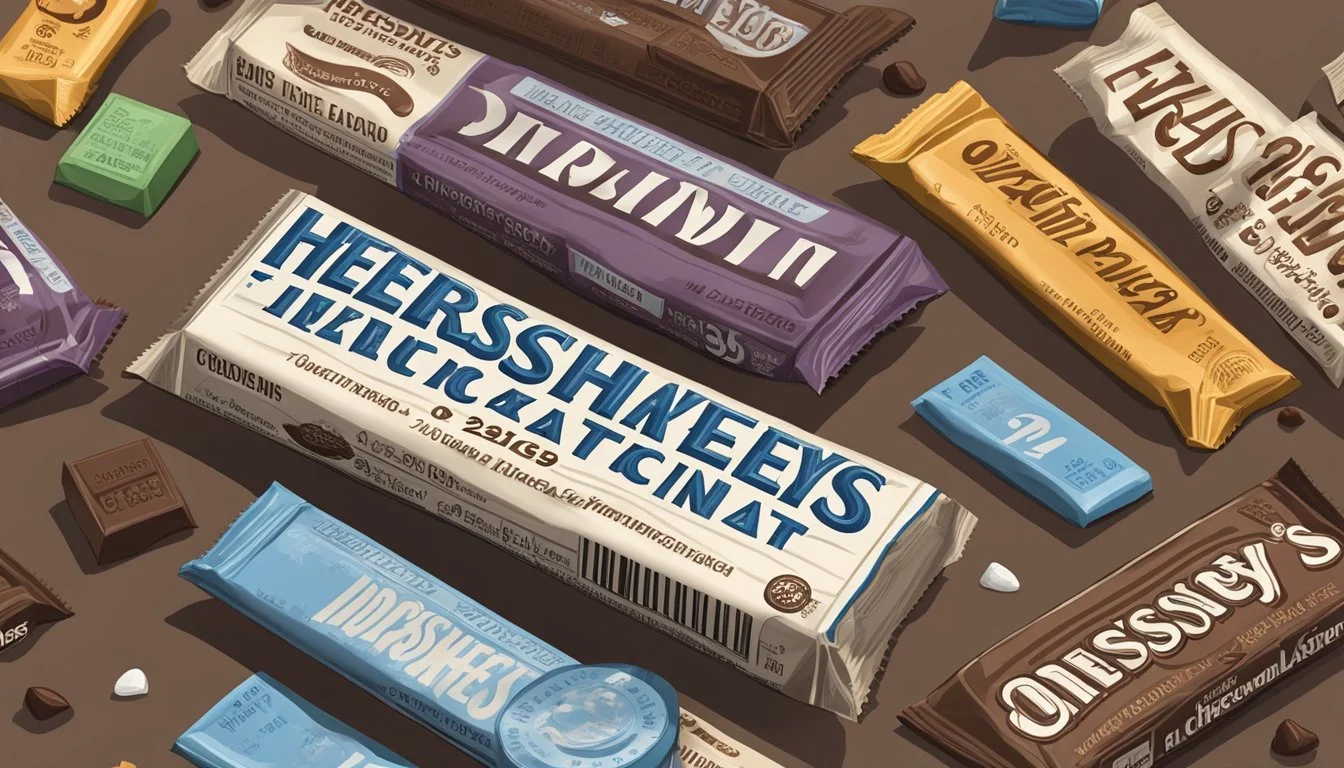How Long Do Hershey's Chocolate Bars Last?
Understanding Shelf Life and Storage
When considering the shelf life of Hershey's chocolate bars, it is essential to know how storage conditions affect their longevity. An unopened Hershey's chocolate (What wine goes well with chocolate?) bar stored under ideal conditions can be expected to maintain quality for up to a year. Once opened, if stored correctly, the chocolate can last between 6 to 8 months. It's important to note that while chocolate does not necessarily become harmful to consume after these time frames, its quality in terms of taste, texture, and appearance might decline.
Proper storage is key in preserving the freshness of chocolate. Hershey's chocolate bars should be kept away from heat, moisture, and light, with a recommended storage temperature between 65 and 68 degrees Fahrenheit and a humidity level of less than 55 percent. These conditions help to prevent changes in flavor and texture, ensuring the chocolate remains as enjoyable as when first opened. Despite best before dates, chocolate lovers may find that their chocolate can still be pleasing and safe to eat beyond the indicated expiry, albeit with potential changes in quality.
Understanding the Shelf Life of Hershey's Chocolate Bars
When it comes to enjoying Hershey's Chocolate Bars at their peak quality, understanding their shelf life is crucial. It is determined by various factors, including storage conditions and expiration dates.
Significance of Expiration Date
Hershey's Chocolate Bars are typically marked with a "Best By" date, which suggests the timeframe within which the product is expected to retain optimal taste and texture. While these bars can often remain safe to consume past this date, they might not deliver the premium experience intended by the manufacturer.
Best Before Date: Indicates optimal quality period
Use-By Date: Often not used for chocolates, but would indicate safety
Factors Influencing Shelf Life
The shelf life of chocolate bars can be extended by maintaining proper storage conditions. Hershey's bars should be kept away from direct sources of heat and light to prevent any degradation in quality. Ideal storage involves:
Temperature: 60-68°F (15-20°C) is optimal
Humidity: Low humidity to prevent moisture, which can lead to spoilage
Light: Store in a dark place to protect the flavor and color
Proper storage can greatly extend the shelf life beyond the expiration date, with unopened Hershey's Milk Chocolate Bars potentially lasting one to two years under optimal conditions.
The Role of Ingredients in Chocolate Longevity
The longevity of chocolate bars, such as those produced by Hershey's, is significantly influenced by the stability and preservation properties of their ingredients.
Cocoa Butter and Fat Content
Cocoa butter, (how long does cocoa butter last?) the fat derived from the cacao bean, is fundamentally stable, which contributes to the extended shelf life of chocolate products. The fat content in chocolate acts as a preservative by slowing down oxidation and the growth of microbes. In dark chocolate, a higher cocoa content usually means a greater proportion of stable cocoa butter, potentially extending its shelf life compared to milk chocolate or white chocolate, where there are more dairy components.
Sugar and Dairy Components
The sugar in chocolate serves as a preservative due to its hygroscopic nature, meaning it absorbs moisture from the environment, reducing the water activity that bacteria and molds need to thrive. The addition of milk and other dairy products in milk chocolate and white chocolate introduces fats and proteins that can be sensitive to spoilage, thereby potentially shortening the shelf life compared to dark chocolate, which typically contains no dairy.
Proper Storage Methods for Preserving Freshness
Maintaining the freshness of Hershey's chocolate bars relies heavily on identifying the optimal storage location and utilizing correct packaging techniques. Ideal conditions include cool, dry environments away from strong odors.
Ideal Storage Locations
The best location for chocolate storage is a cool, dry place, such as a pantry or even a cabinet away from heat sources or sunlight. The temperature should ideally be consistent, ranging between 60-68°F. Humidity levels should remain below 50 percent to prevent any moisture from spoiling the chocolate. Places to avoid include near windows, stoves, or in areas that experience significant temperature fluctuations.
Pantry: Ideal for long-term storage
Cabinet: Preferable if it's away from heat
Refrigerator: Only recommended when room temperature exceeds 68°F, but chocolate should be allowed to return to room temperature before consumption
Packaging and Sealing Chocolate
After finding the perfect storage location, Hershey's chocolate bars should be properly sealed to maximize freshness. The wrapping should protect it from moisture, odors, and any contaminants.
Original Packaging: Often sufficient for short-term storage
Airtight Containers: Best for long-term preservation
Plastic Wrap: Useful for resealing opened chocolate bars
It's crucial to ensure that chocolate is sealed away from strong-smelling foods, as it can absorb these odors, altering the taste. If storing in a refrigerator due to high ambient temperatures, placing the chocolate in a sealed airtight container helps prevent the absorption of odors and moisture condensation.
The Impact of Temperature and Humidity
Proper storage conditions are critical for preserving the quality of Hershey's chocolate bars. They maintain their best quality when stored in an environment that controls temperature fluctuations and humidity.
Effects of Temperature Fluctuation
Hershey's chocolate should be kept away from heat sources and not be subjected to temperature changes, as this can lead to a quality loss. The optimal temperature range for storage is 60-68°F (15-20°C). When temperatures rise above this range, chocolate can soften, causing the cocoa butter to separate and rise to the surface, a process known as fat bloom. Conversely, if chocolate is exposed to temperatures below this range and subsequently warms up, sugar bloom can occur due, where sugar crystals rise to the surface as the chocolate thaws.
Managing Humidity and Moisture
A cool and dry place is vital for chocolate storage because humidity can adversely affect Hershey's chocolate bars. Humidity levels should be kept below 55% to prevent moisture from compromising the structure and taste of the chocolate. If chocolate is exposed to a high-humidity environment, it can absorb moisture, which can lead to the growth of mold. Storing chocolate in a refrigerated or freezer setting must be done carefully to avoid condensation during thawing, which could introduce additional moisture. If refrigeration is necessary, sealing the chocolate in an airtight container can help mitigate moisture exposure.
Identifying Signs of Spoilage in Chocolate
It is crucial for chocolate lovers to recognize the signs of spoilage to ensure their treat is safe and enjoyable. They should assess the chocolate's visual aspects and any changes in texture and taste.
Visual Indications
When examining chocolate for freshness, one should look for changes in appearance. Signs of spoilage may include a discolored surface or the presence of a white coating, which can indicate either fat bloom or sugar bloom. This blooming occurs when chocolate is exposed to temperature fluctuations, causing the sugar or fat to crystallize on the surface. While it may not look appealing, a chocolate exhibiting bloom is still generally safe to consume.
Visual Signs Likely Cause Safe to Eat? Discolored Age, temperature changes Yes, if only surface-level White Coating Fat or sugar bloom Yes Mold Humidity, contamination No
Texture and Taste Alterations
In terms of texture, chocolate that has gone bad may feel grainy or crumbly rather than smooth and creamy. This change can detract from the chocolate's normally pleasant mouthfeel. Spoilage in chocolate may also result in an off smell or odor that is a clear indicator that the chocolate should not be consumed. As for the flavor, any sour or abnormal taste is a definite red flag. These sensory changes usually suggest that the chocolate is stale or expired, and while it may not cause harm if eaten, the degradation in quality will likely affect the overall enjoyment.
Texture Changes Indication of Taste Changes Indication of Grainy Possible spoilage Sour Spoilage, contamination Crumbly Age, improper storage Off flavor Spoilage, contamination
Special Considerations for Different Types of Chocolate
The shelf life of Hershey's chocolate bars varies depending on the type of chocolate. Factors like cocoa percentage and storage conditions play a crucial role in determining how long chocolate lovers can enjoy their sweet treat.
Dark vs. Milk Chocolate
Dark Chocolate: Hershey's dark chocolate typically contains a higher percentage of cocoa, which gives it a more robust flavor and a longer shelf life than milk chocolate. Dark chocolate can last for up to 2 years when stored properly. It is less susceptible to fat bloom, a white film that can appear on the surface due to the chocolate's fat migrating to the top.
Milk Chocolate: On the other hand, Hershey's milk chocolate has a higher milk content, which contributes to a creamier taste and a shorter lifespan. Milk chocolate bars usually remain in good condition for about one year unopened and about 6 to 8 months once opened, provided they are stored appropriately.
Handling White Chocolate and Chocolate Chips
White Chocolate: White chocolate differs significantly from its counterparts because it contains no cocoa solids, relying instead on cocoa butter, sugar, and milk. The absence of cocoa solids means that white chocolate is prone to spoilage and flavor degradation faster than dark or milk chocolate. Ideally, Hershey's white chocolate should be consumed within 4 months of purchase.
Chocolate Chips: Hershey's chocolate chips are often used in baking and can last a long time if kept in a cool, dry environment. Unopened, they can maintain quality for up to 2 years. Once the bag is opened, it's best to use them within 6 months to prevent the chips from developing a rancid taste or fat bloom.
In each case, storage should be in a cool, dry place, with temperatures between 60-68°F (15-20°C) being ideal to preserve the flavor and appearance of the chocolate.
Extended Storage and Freezing Chocolate
When considering the longevity of Hershey's chocolate bars, proper storage is paramount. Utilizing a freezer can significantly extend a chocolate's shelf life while maintaining its freshness, but specific precautions must be taken to protect its flavor and texture.
Freezing Chocolate for Longevity
Freezing Hershey's chocolate bars can enhance their longevity. For optimal preservation, chocolate should be:
Wrapped tightly in aluminum foil or plastic wrap.
Placed inside an airtight container.
Stored at a constant freezer temperature to avoid temperature fluctuations, which can cause bloom.
One may store Hershey's chocolate in the freezer for approximately 6 to 8 months. Though it can remain safe to consume beyond this point, its quality is best within the first 2 to 3 months after freezing. When choosing to thaw, it should be done gradually by transferring the chocolate to the refrigerator and then to room temperature to prevent condensation, which may affect taste and texture.
Precautions for Storing Chocolate Long-Term
For long-term storage, one should consider:
Temperature: Ideally, Hershey's chocolate should be kept in a cool (65-68 degrees Fahrenheit) and dry environment when not frozen.
Humidity: It should be low as excessive moisture can lead to sugar bloom, affecting appearance and texture.
Odors: As chocolate can absorb strong odors, it must be stored away from such items.
Special caution must be exercised to protect the chocolate from any sources of heat, as even when not frozen, exposure can cause cocoa butter to melt and re-solidify, leading to a grainy texture and fat bloom. These steps ensure Hershey's chocolate bars remain fresh and retain their integrity for both immediate enjoyment and extended storage.
Uncommon Scenarios and Myth Busting
Peeling back the layers of hearsay, it's clear that the longevity of chocolate and the risks associated with consuming past its best date have been the subject of many myths and misunderstandings. In addressing the outliers and setting the record straight, one can better understand the shelf life and safety of chocolate products.
Can Chocolate Last a Decade?
While chocolate does not have an indefinite shelf life, it may remain safe to consume long after its best-by date, especially if unopened and stored in optimal conditions—cool, dry, and away from sunlight. Hershey's chocolate bars, for instance, are typically at their best within a year if sealed, and roughly 6-8 months once opened. However, in some cases, such as with dense dark chocolate varieties, the product may maintain its quality for up to a decade. Nevertheless, they may exhibit changes in flavor and texture, and the presence of white spots, known as fat or sugar bloom, due to temperature fluctuations or moisture.
Myths About Expired Chocolate Being Poisonous
The belief that expired chocolate becomes poisonous is unfounded. Eating chocolate past its expiration date might not provide the ideal taste experience, and while it's possible for chocolate to develop an off flavor or become stale, it doesn't typically become harmful. Most commercial chocolates contain preservatives, which prolong shelf life. Consumers may find that even Halloween candy unearthed months later can be safe, albeit less palatable. It's important to discern between spoilage that impacts taste and actual health risks—chocolate does not generally pose a threat like some perishable goods do when they go bad.
FAQs and Tips for Chocolate Enthusiasts
Chocolate enthusiasts often seek to maximize the enjoyment and longevity of their confections. Understanding factors like the shelf life of chocolate and optimal storage techniques are crucial for maintaining the quality of chocolates such as truffles (What wine goes well with truffles?), bars, and candies.
Dealing with Chocolate Bloom
When chocolate exhibits a white or grayish coating, it is likely experiencing what is known as fat bloom or sugar bloom. These forms of bloom occur due to temperature fluctuations causing cocoa butter separation or sugar crystallization, respectively. Though bloom can affect the texture and appearance, it does not make the chocolate unsafe to eat. To prevent bloom:
Store chocolate in stable conditions away from direct heat sources.
Maintain a cool and dry place such as a pantry, ideally at a temperature between 60-68°F (15-20°C).
Optimizing Shelf Life with Proper Storage Locations
Proper storage is essential to preserving the shelf life and quality of chocolate. High-quality chocolate candies and truffles have varying shelf lives, but the principles of storage remain the same. To optimize the shelf life:
Keep chocolates in airtight containers to protect them from moisture and odors.
A cool and dry place such as a pantry or a cupboard away from the oven is ideal for storage.
Refrain from storing chocolate in the refrigerator unless extreme conditions necessitate it, as this can lead to moisture condensation and sugar bloom once returned to room temperature.
By adhering to these storage guidelines, chocolate lovers can help ensure that their chocolate retains its intended taste and texture for as long as possible.
Conclusion
Unopened Hershey's chocolate bars, when stored properly, can retain their quality for up to a year, while opened bars can last for 6 to 8 months. It is imperative to note that chocolate bars do have an expiry date, which typically indicates the peak period for flavor and texture rather than a firm safety cut-off. Chocolate lovers may observe changes in the product as it nears or surpasses this date, including alterations in texture and taste.
Proper Storage Recommendations:
Temperature: Keep at a cool, consistent temperature, below 70°F (21°C).
Environment: Store away from strong odors as chocolate can absorb them.
Container: Use an airtight container to protect from moisture and contaminants.
A key factor for maintaining freshness is managing storage conditions. If chocolate develops a white film, known as fat bloom, it is generally still safe to consume. The presence of fat bloom indicates that the cocoa butter has separated due to temperature fluctuations or improper storage and has risen to the surface.
For the longest possible shelf life, adherence to storage guidelines is crucial. Hershey's chocolate lovers can enjoy their favorite treat with the assurance that following proper storage methods will help maintain its intended quality and flavor.











